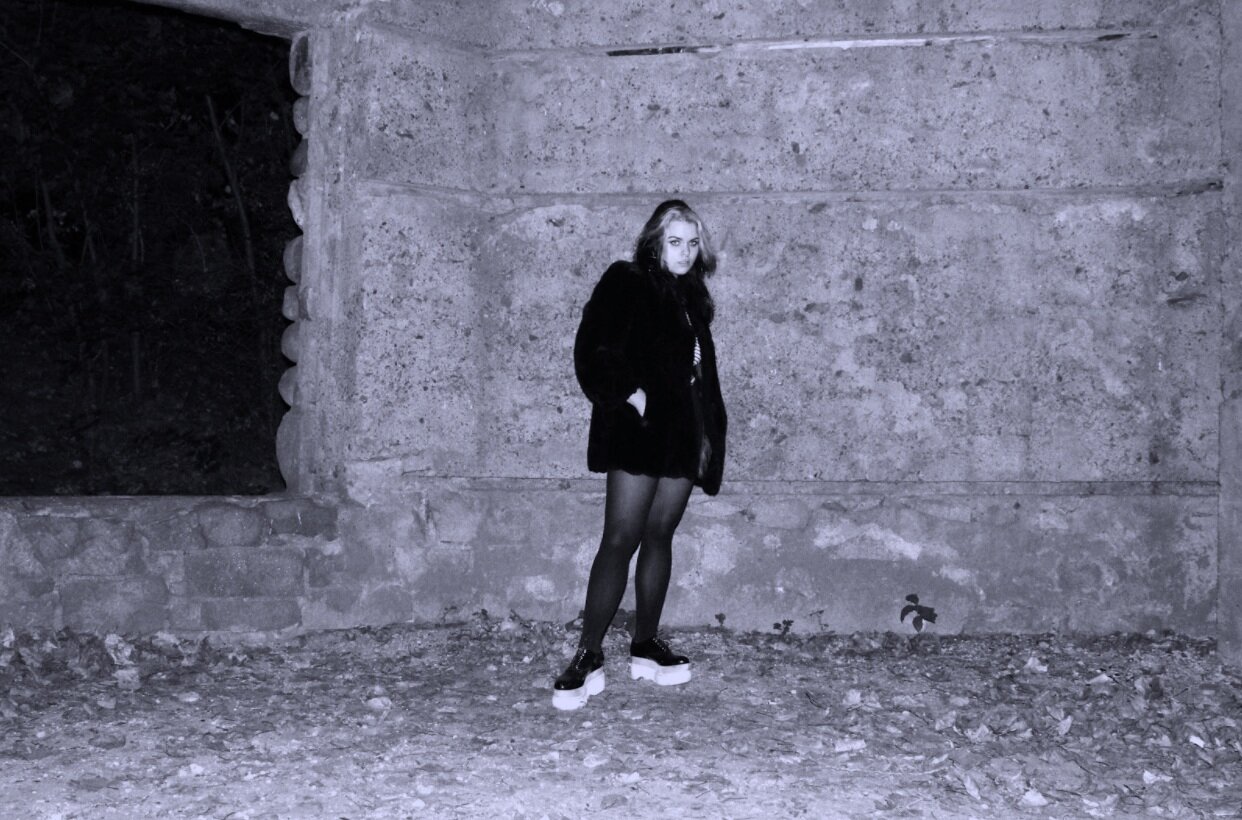Artist Profile: Julia Spotts
By Tom Carlson
Recently I got in contact with my favorite person to listen to contemporary classical in a field with, Julia Spotts. Spotts (she/they) is a musician, visual designer, garment maker and typographer out of Worcester, Mass. Spotts works mostly under the moniker “mellified man”, with two recent Bandcamp releases “Postmodernist Conagion” and “Road’s End.”
Julia Spotts (J.Spotts) also released a tape on Makeshift Encounters, titled “1594621053110”. mixed by “D. Spotts”, of the noise label “Unseen Force,” and also has many collaboration projects in the works such as Sokushinbutsu.
Spotts (mellified man) makes noise music, a genre known for using both periodic, aperiodic transient and non-transient sounds to evoke texture. Noise music is older than one might think. It dates back more than a century and really only started getting traction as a recognized genre of music in the ’50s.
Spotts’ process is unique to its genre. “Each time I record or play it’s like figuring out a new instrument.” J.Spotts began with a theremin and delay pedal but has since retired the instrument for “various found objects and woodshop materials such as saw blades, cinder blocks, hammers, glass bottles,” recently “a bunch of mannequin heads (and one leg.)” and J.Spotts’ prized air compressor. All these sounds are run through pedals and amplifiers until the room becomes the instrument itself. J.Spotts’ relays, “Sometimes my house shakes as I play, but I like to think skeletons are just dancing underground to the sounds.”
Spotts’ artistic influences are Dadaist as is the nature of noise music. The structure of a “mellified man” piece is deeply informed by the musician and their tools. “I played traditional instruments and conventional music for years, but I never found a lot of myself in the work I made — noise really opened me up to that personal aspect, and I’m really thankful for that.” Spotts’ artistic philosophy seems to be almost as important than the product it informs. Their music-making is led by improvisation and intuition.
When profiling an artist, I like to ask them about five pieces of media they would recommend to their listeners. “First, Sissy Spacek’s S/T from 2001. This release is accessible and beautiful for new listeners of noise.” Spotts holds this tape dear to their heart and the center of their collection. Item number two is “Next, Monk.” by Thelonious Monk from 1965. It didn’t surprise me to find Spotts to love the experimental post-bop pianist.
Spotts continues with a favorite film, “An Andulasian Dog (Un Chien Andalou)” 1929, by Luis Buñuel and Salvador Dali. For those unfamiliar with this short film, it is a silent romp through plotless surrealism. It is non-transient and aperiodic in a sense much like noise music. “This short film taught me a lot about how not everything has to make sense, it just has to be expressive.” We continue with “A Hunger Artist by Franz Kafka” 1922. If you already listen to the noise and watch Buñuel, you’ll know Kafka and like Spotts, you’ll lose 10 hours of sleep after reading. Lastly, Spotts recommends “Number Six is Sacred” 2017 by Tashi Dorji and Frank Meadows. Spotts doesn’t tell us anything about the listen other than to listen to it — but I’ll take their word.
You can check out their work and projects similar on their Bandcamps, mellifiedman, makeshiftencounters and dead-monks.
Tom is a culture writer for La Tonique.
